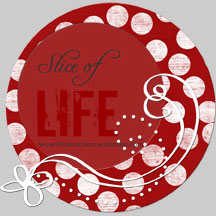 For the past five or so years, a good friend and I have been setting goals at the start of a new year. The hope has always been that by sharing our goals with each other, we could support one another as the going got tough.
For the past five or so years, a good friend and I have been setting goals at the start of a new year. The hope has always been that by sharing our goals with each other, we could support one another as the going got tough.Life gets busy, though. This past year we checked in with one another about once a month (we currently live 600 miles apart), but I couldn't even tell you what my goals for 2009 were without looking them up. So this year we're simplifying things and going with a single goal.
Why am I sharing this with you? My goal for 2010 is to maintain some semblance of balance in my life and one of the areas that throws me off-balance the most is work. Mostly because I love my job. It's always challenging, never dull, and no two days are the same. I'm also eager to watch and learn from others, to collaborate, and to do lots of reading and reflecting. However, while I try to never put work before my family, I will often sacrifice my personal time for work. And that doesn't make me the best husband or father (or teacher or friend, for that matter).
That being said, I need to lighten my load. I need to choose wisely where I devote my time and energy. I'd love to be doing more writing about the thinking that I've been doing as a part of our Comprehension and Collaboration book club, about the small group of folks who have committed to studying constructivism and inquiry and applying it in our upper elementary classrooms, or just about the learning I do in my own classroom on a daily basis. But as you may or may not have noticed, I haven't posted much here over the past month. I can't seem to find the time. Maybe it's the holidays. Maybe it's having a two year old at home (in addition to 3rd & 1st graders). [I've noticed recently that many of my favorite bloggers have kids that are at least high school age, if not older. Maybe there will be more time then?] Maybe I'm simply trying to juggle too much.
Anyhow, friends and colleagues, I'm asking for your encouragement to help me maintain balance. The next time you see me getting ready to jump into a new endeavor, remind me to think on it for day or so before committing. Also, this doesn't mean that I'm not interested in reading something new or working on a new project, I just hope to be more mindful about it.
So, thanks for listening. How about you? Any goals, personal or professional, for 2010?
[Photo credit: SlackLine by Speleo Perdido on Flickr.]










